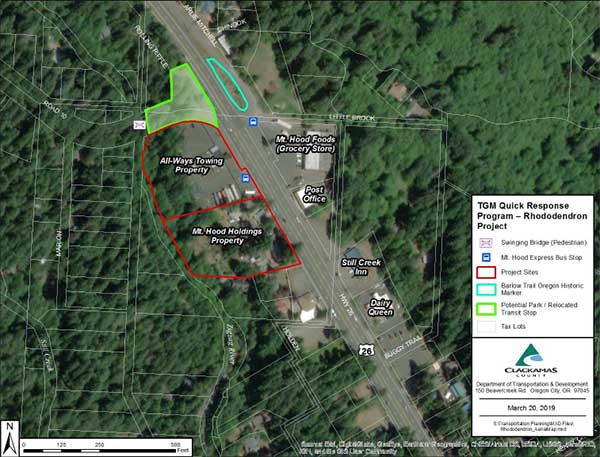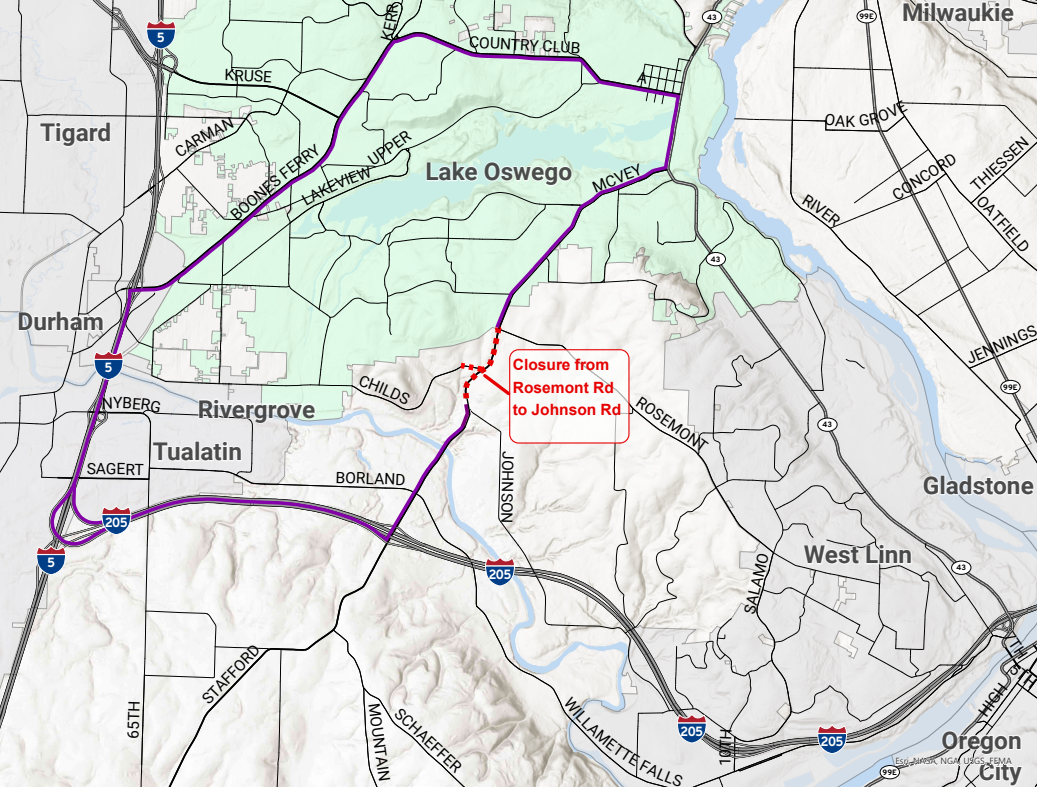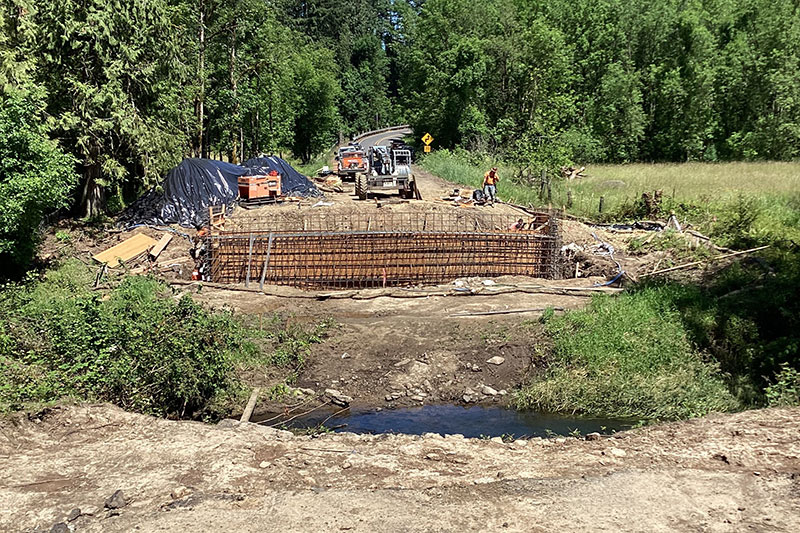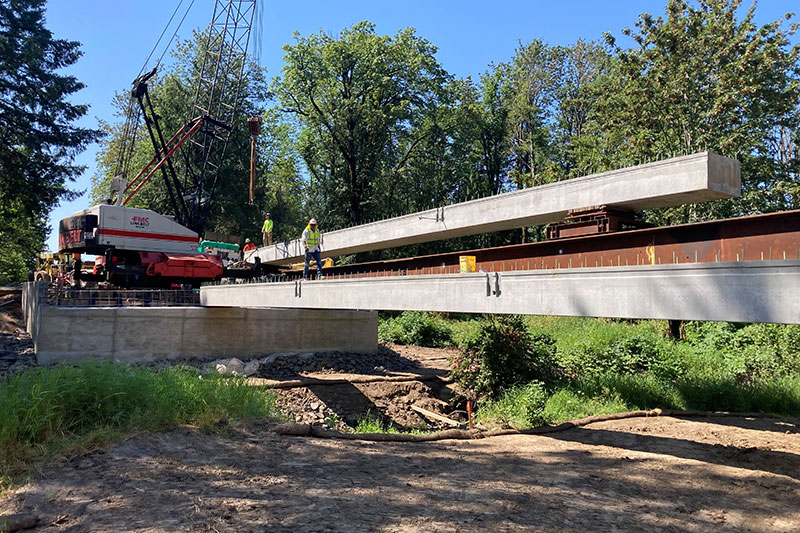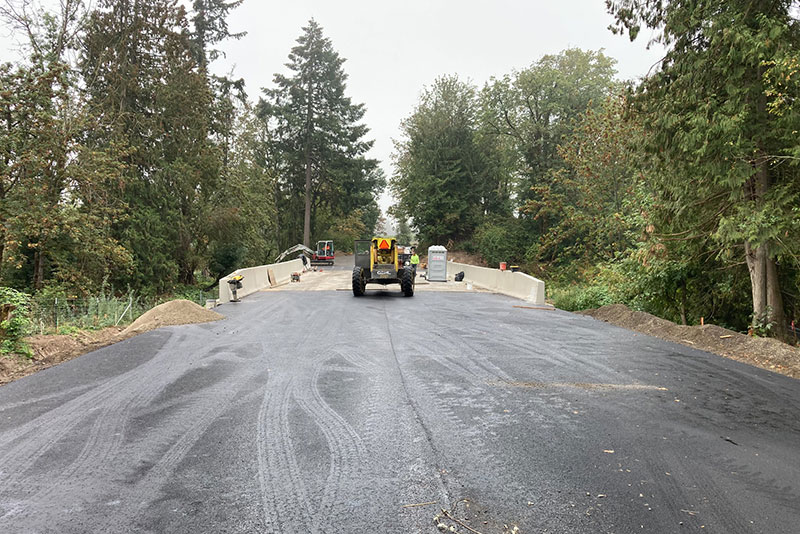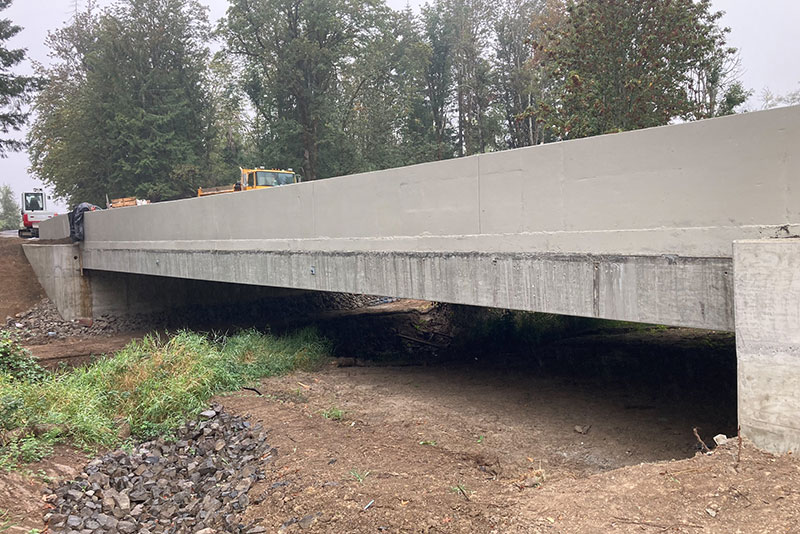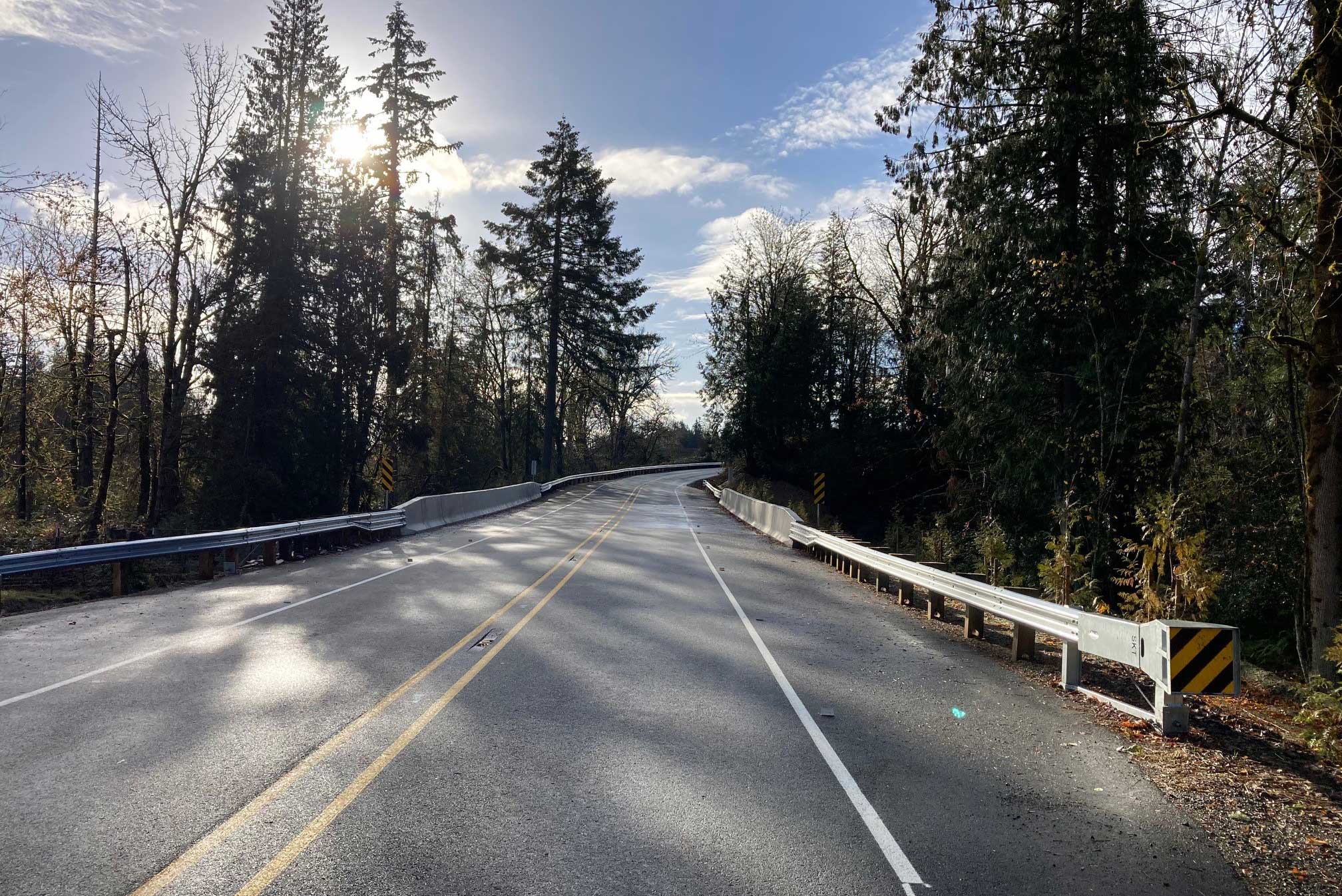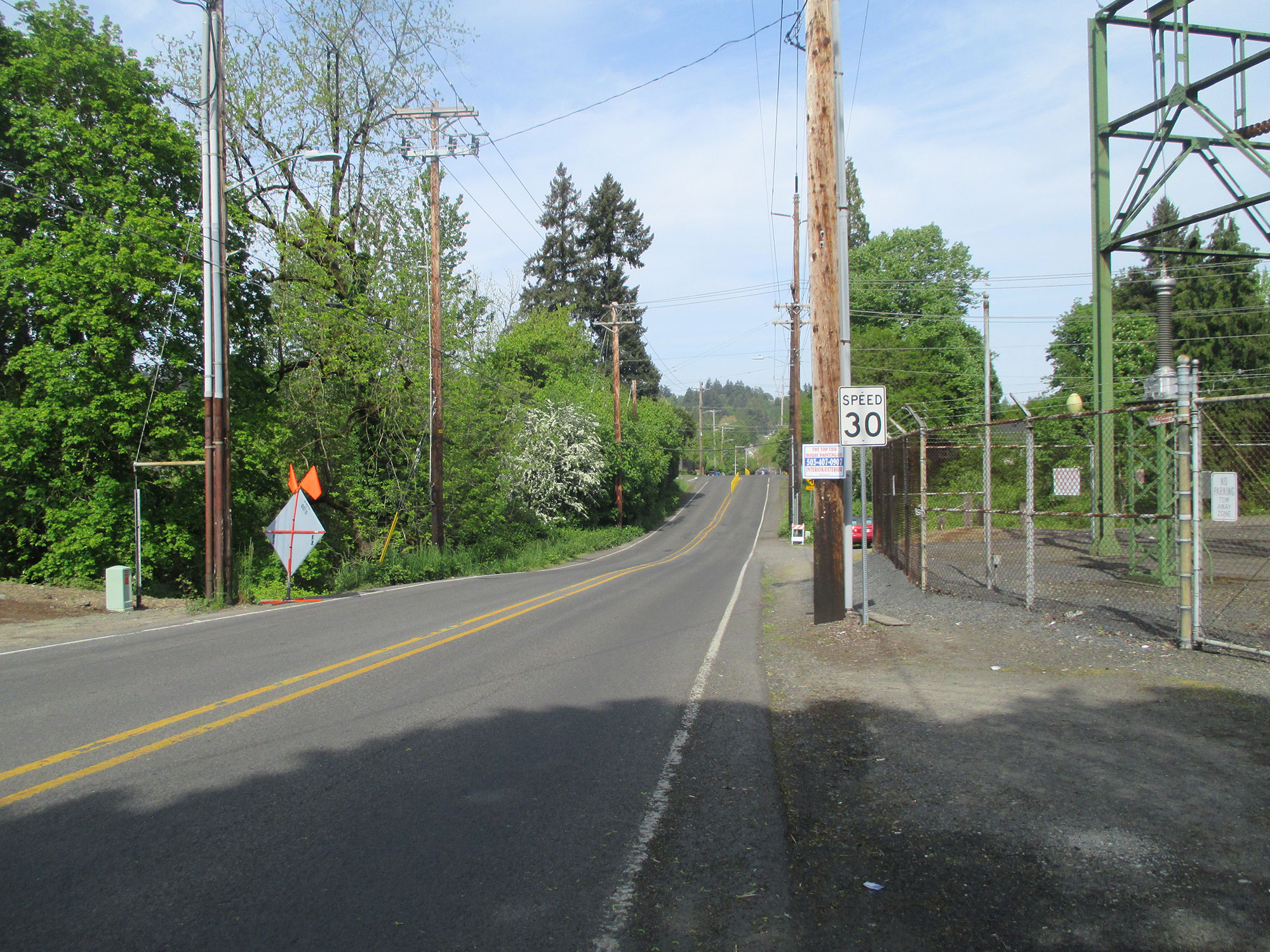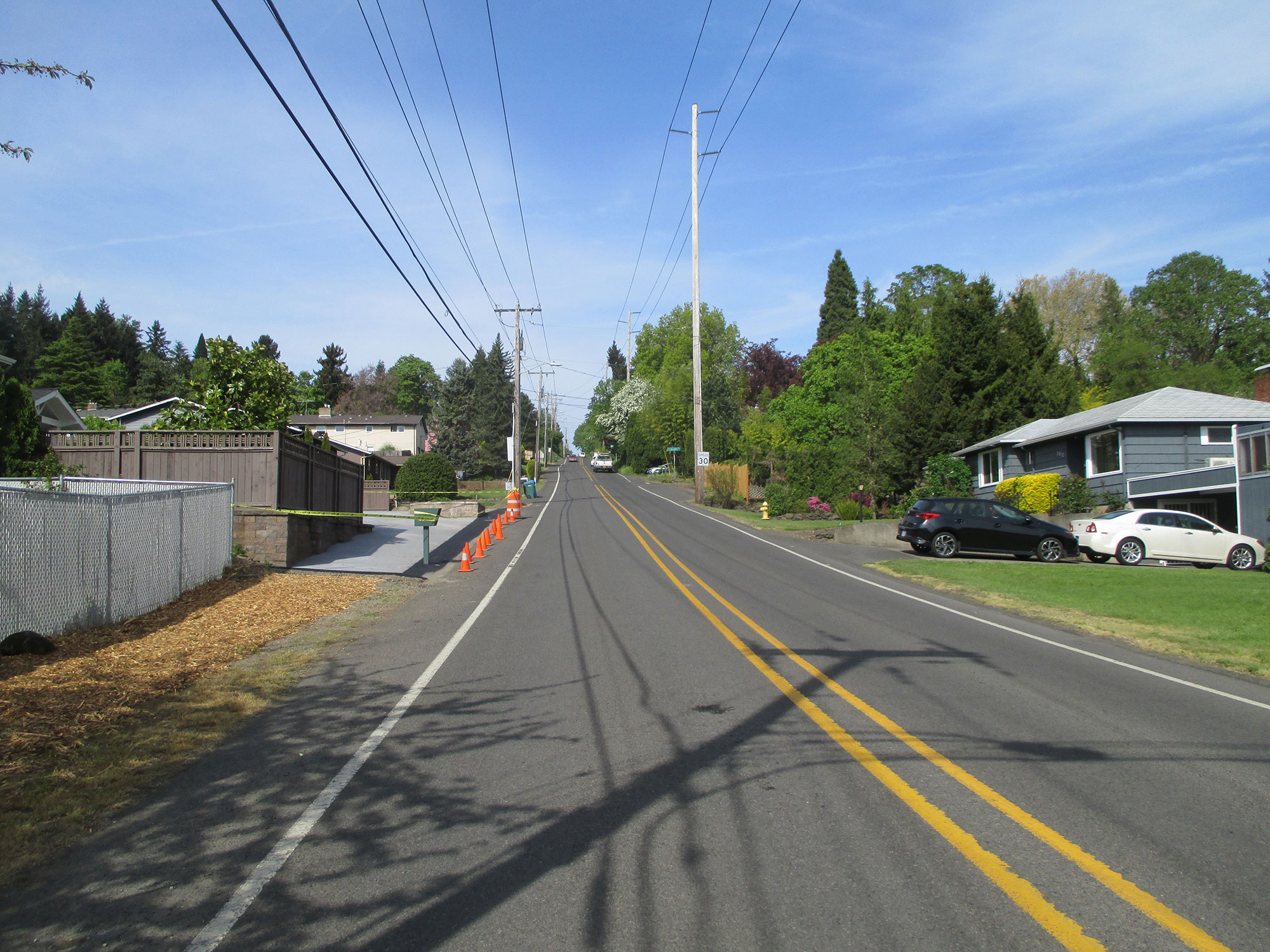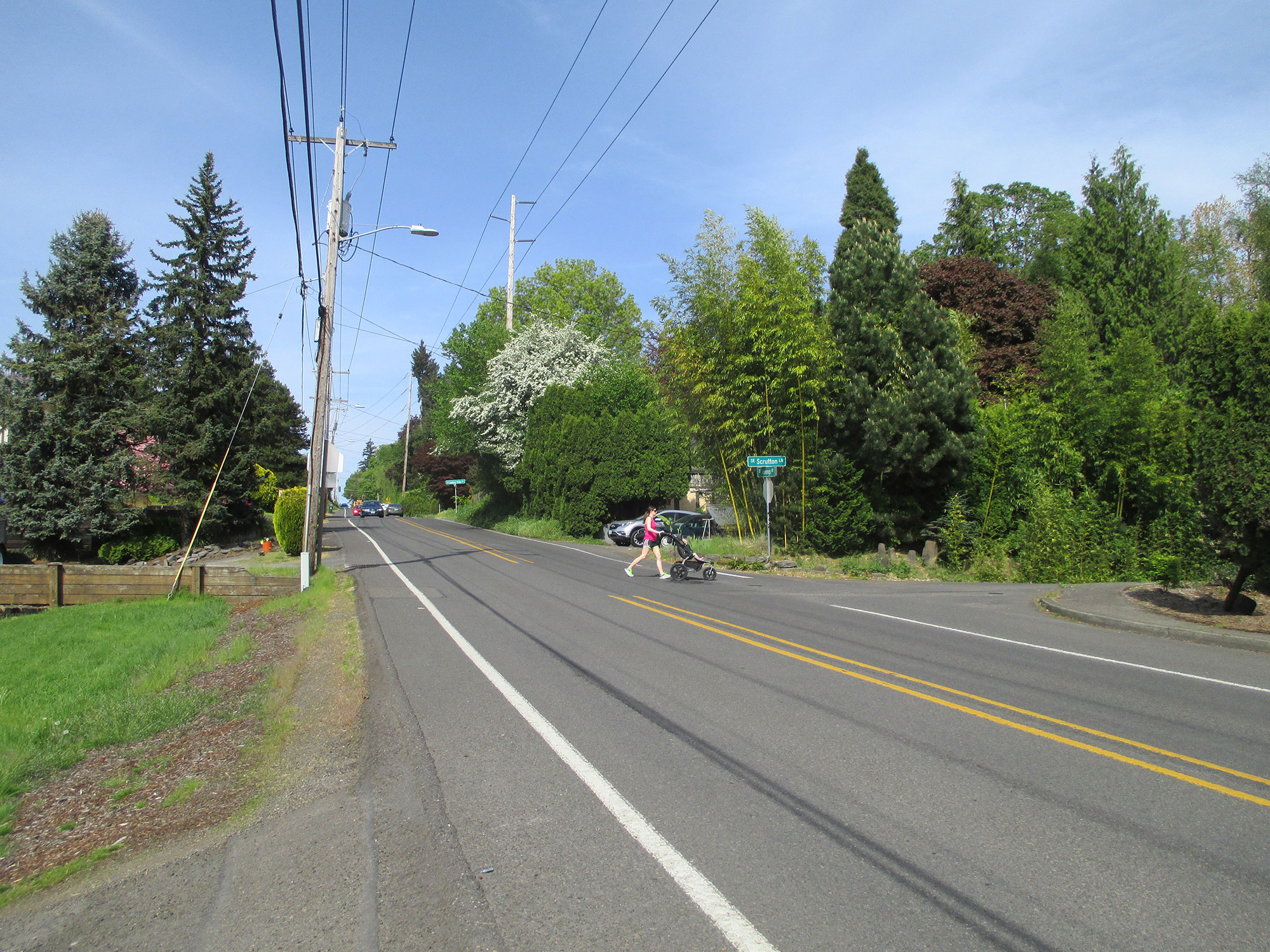Improving safety and connectivity for pedestrians, cyclists, and motorists along SE Jennings Ave.
This project, along SE Jennings Ave. between Highway 99E (McLoughlin Blvd.) and SE Oatfield Road, will help connect residents to nearby businesses and transportation options, and provide safe routes for students to travel to local schools in the area.
Proposed design for all of SE Jennings Ave. within the project limits.

Schedule
Bids were received and contract was awarded in February 2024 to Emery and Son’s Construction.
- Project planning and design: Nov. 2019 – Nov. 2023
- Right of Way Acquisition Efforts: Jan. 2021 – Sept. 2023
All right of way acquisitions are conducted as required by state and federal law. Read right of way brochure: English | Spanish. - Construction: May 2024 – October 2025
Traffic impacts
- Work hours: 7 a.m. and 6 p.m., Monday–Friday, and Saturdays as needed.
- The construction contractor will be concentrating on the McLoughlin Blvd to Addie St while it is closed. Once completed, construction is planned to start at Addie St and move towards Oatfield Road, followed by paving.
- The road will be paved in July/August, striped in September and construction completed by October 2025.
Engineer/consultant
Nicholas McMurtrey, PE; Murraysmith, Inc.
Things to be aware of
Traveler Safety FAQs
This section of Jennings Ave. is being considered now because it best fit the criteria for Metro’s Regional Flexible Funds Allocation funding program (a key funding source). It is the appropriate size and had already been identified as a high priority project in the Clackamas County Transportation System plan.
In 2013, Clackamas County requested funds for this project from Metro’s Regional Flexible Funds Allocation (RFFA) program, a process used by Metro to distribute federal money to local projects. In November 2013, Metro notified the county that they had awarded funds for this project to begin in 2016–2018. Since the project was not fully funded, the county needed to identify additional funding sources. Once additional funding was identified and the county completed the contracting process with the Oregon Department of Transportation, we were able to begin working on the project in 2019.
Plans for work on other portions of Jennings Ave.
The Clackamas County Transportation System Plan (TSP) includes improvements of bike lanes and sidewalks for the entire length of Jennings Ave. between McLoughlin Road and Webster Road. Project priorities in the TSP were developed with input from the community and adopted by the Board of County Commissioners.
- The current project between Oatfield and McLoughlin is a Tier 1 (top) priority projects
- The segments between River Road and Oatfield are identified as Tier 1 (top) priority projects (Project #1068).
- The segment between Oatfield Road and Webster Road is a Tier 2 (second level) priority project (Project #2021).
Projects along the other segments of Jennings, both the segment from River Road to Mcloughlin and the segment from Oatfield to Webster, will be constructed when we can get funding for them. We depend on outside funding sources for sidewalk and bike lane improvements and work diligently to match needed projects to funding from state and federal resources.
Notices will be sent to area residents and property owners at key points during the process.
Share your comments and ask questions.
Funding
- Estimated project cost: $8.6 million
- Funding sources: Oregon Department of Transportation (ODOT), Federal Highway Administration (FWHA) and Clackamas County
Other Resources
Project area
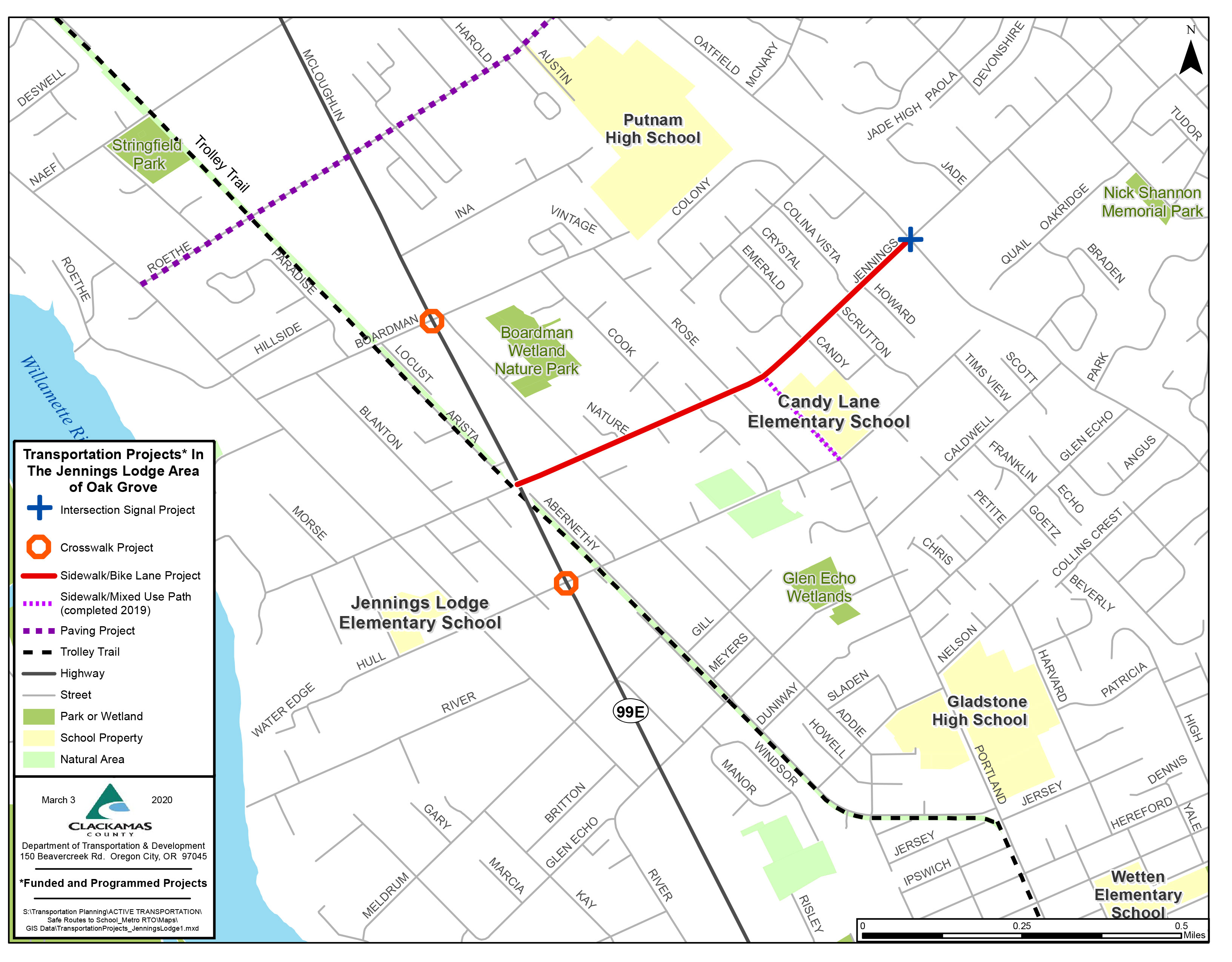
Existing conditions
There are many sections of SE Jennings Ave. without sidewalks or bike lanes. Some examples of these incomplete connections that will be completed as part of this project are shown below.
Traffic analysis
 Projects funded through the new Community Road Fund will increase safety, relieve congestion and maintain local roads.
Projects funded through the new Community Road Fund will increase safety, relieve congestion and maintain local roads. Translate
Translate






